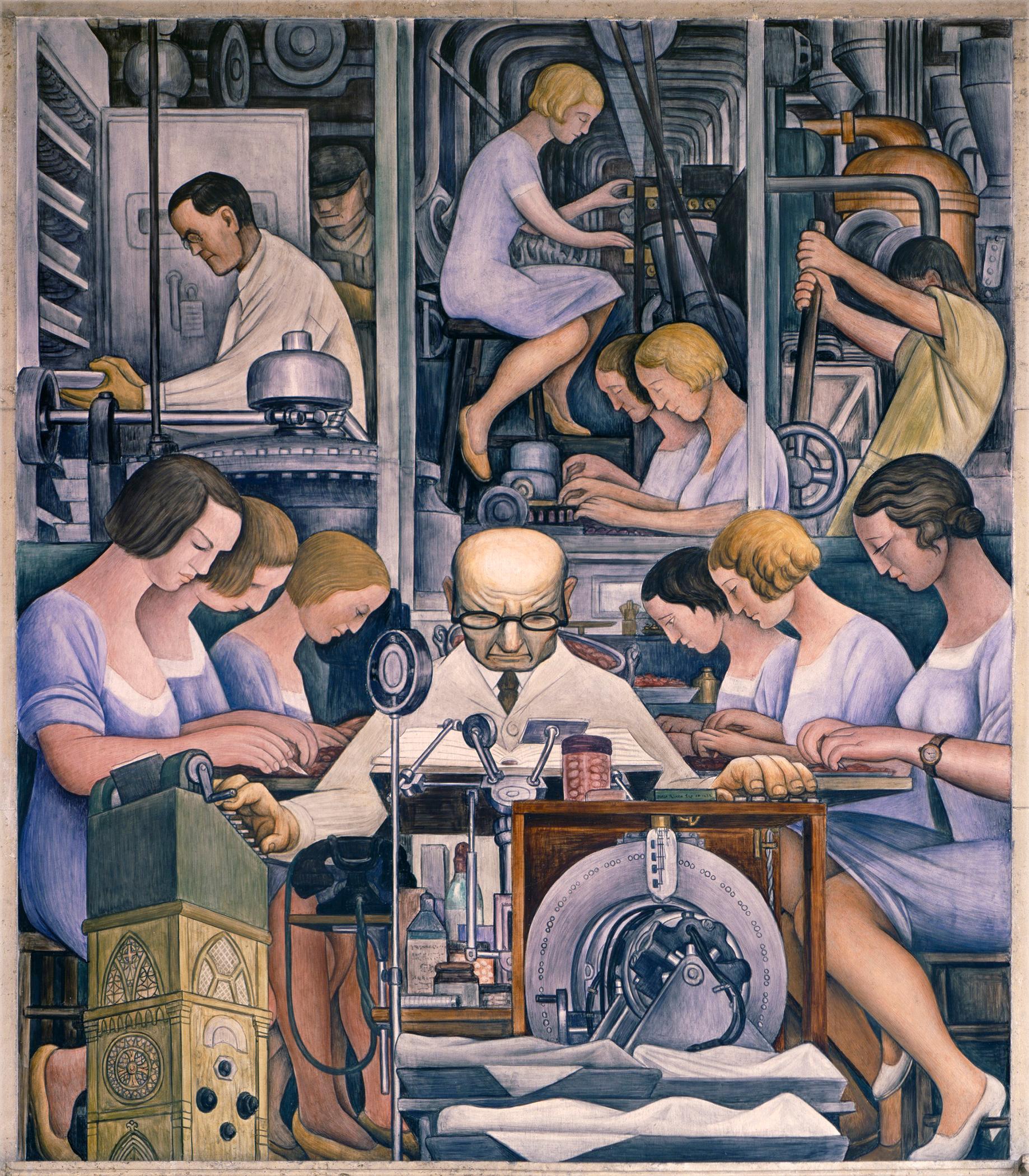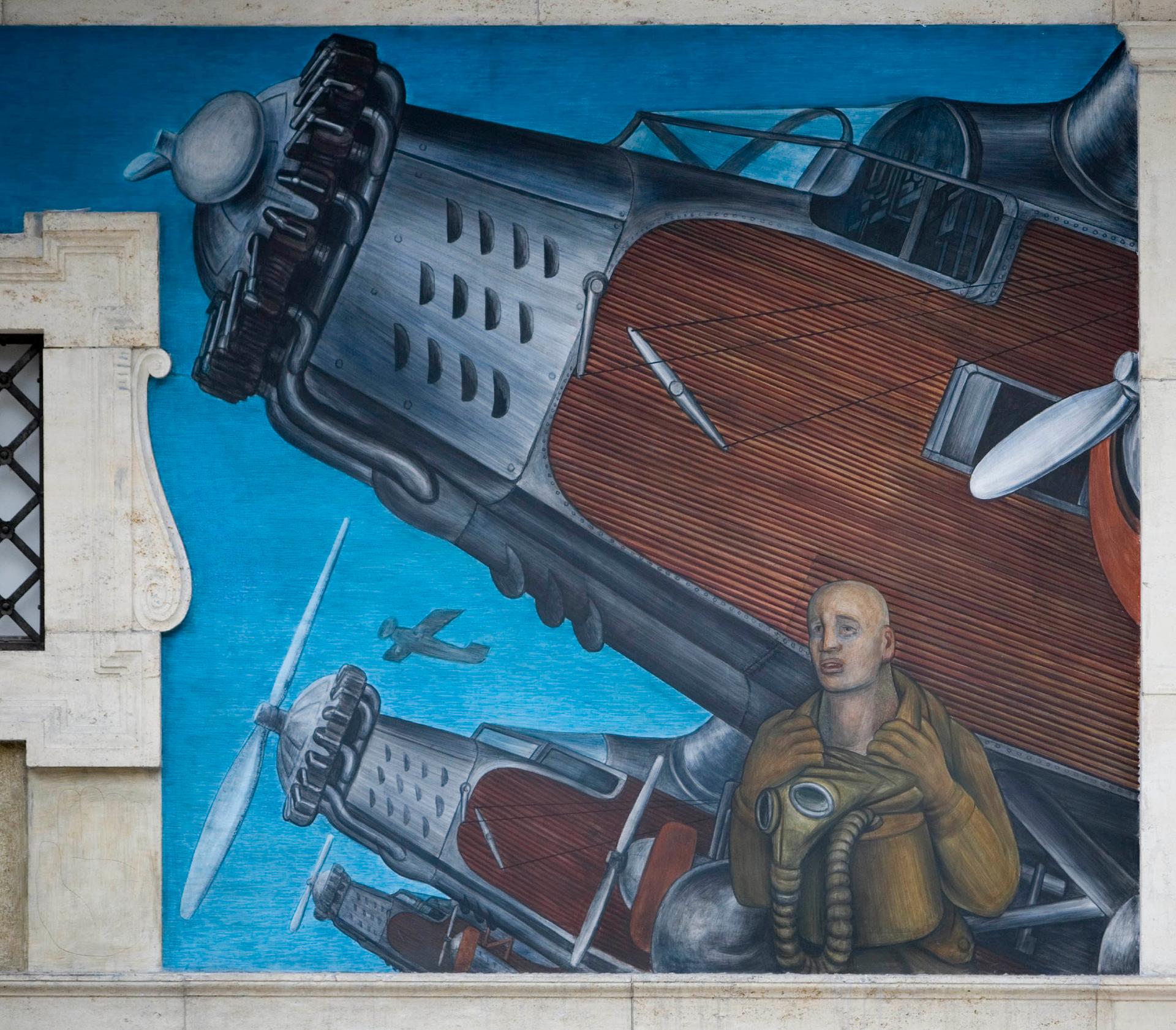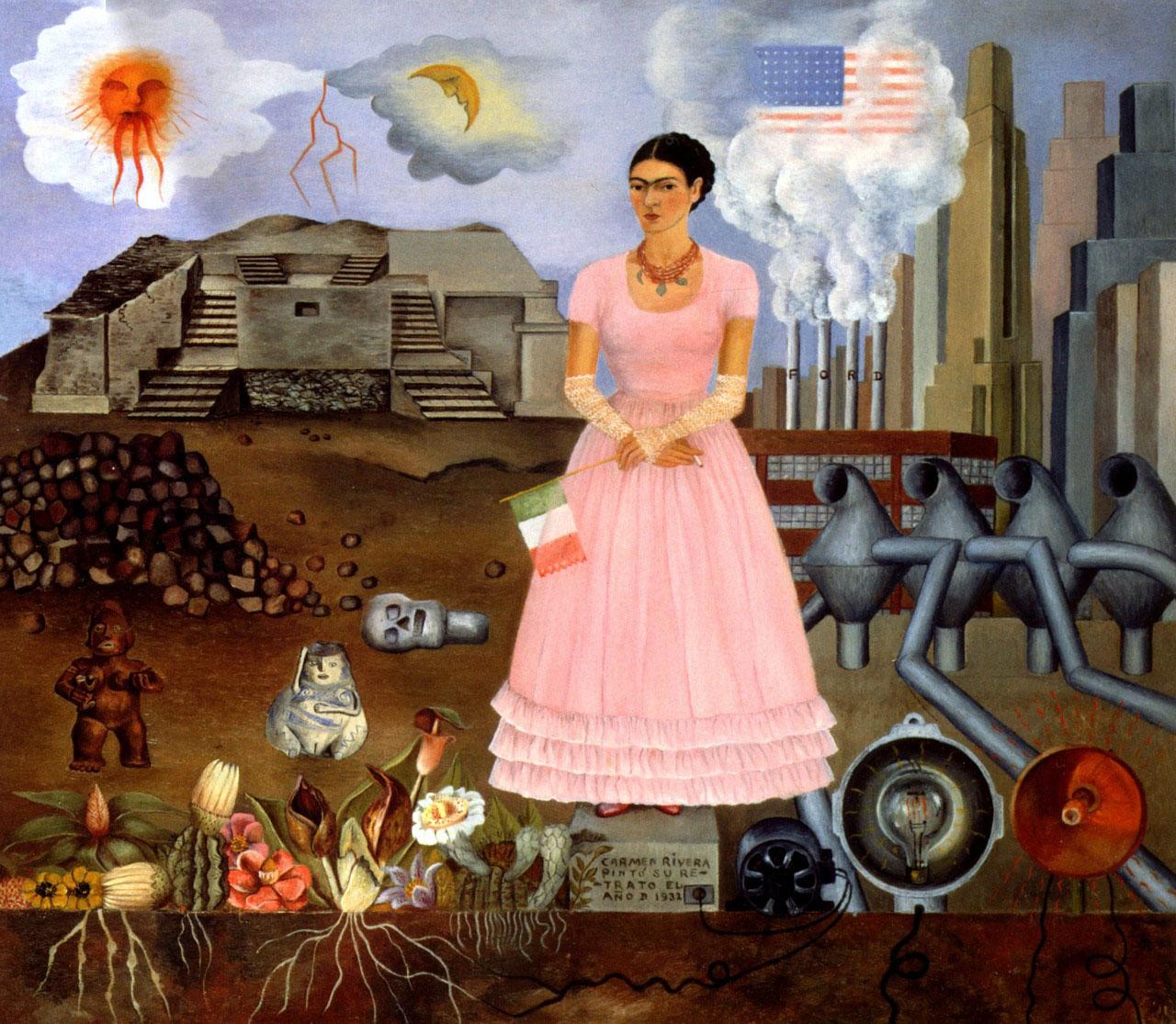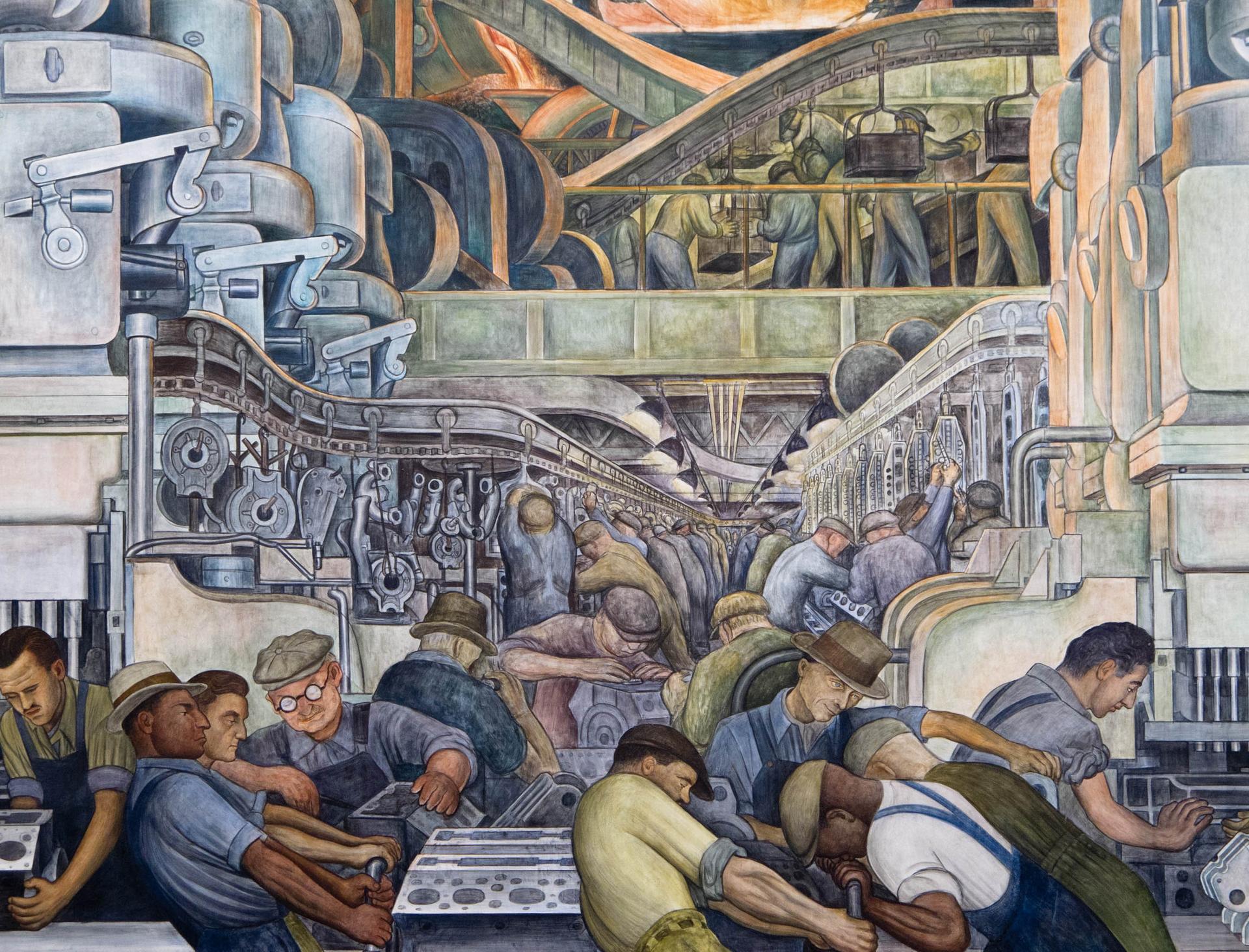Mexican artist Diego Rivera’s painting sings the praises of a Detroit past — and future
Detroit Industry, east wall (detail), Diego Rivera, 1932. Detroit Institute of Arts
Detroit's current financial woes are well known: The city declared bankruptcy two years ago, but it's slowly coming back.
There was another time, however, when times were tough for Detroit — during the Great Depression. Still, that didn't stop some local titans of industry from commissioning art. They brought in Mexican muralist Diego Rivera to paint their city. Rivera came with his wife, fellow artist Frida Kahlo.
The couple made Detroit their home and their canvas for almost a year. Decades later, their work from that period is featured in a new exhibit. Diego Rivera and Frida Kahlo in Detroit, on view at the Detroit Institute of Arts until July 12, explores the tumultuous and creatively explosive year that Rivera and Kahlo spent in Detroit.
%20Kahlo%2C.jpg&w=1920&q=75)
Arriving in Detroit in April 1932, Rivera quickly got to work sketching ideas for the panels that would be exhibited on the walls of the Institute of Art’s garden courtyard. The paintings make up a complex tapestry showing “the creation of an automobile, from the smelting to it leaving the factory."
"All of the other panels are more allegorical, much more symbolic. They deal with the good and the bad, with man and machine, organic vs inorganic, really it's a very complex program,” says DIA director Graham Beal.

Rivera captured scenes in Detroit’s bustling automotive plants and in its steel and cement factories. The reactions to the early paintings, says Beal, ranged widely.
“We have responses from people who were appalled by the notion of turning this great new temple of art into a living billboard, practically, for the Ford Motor Company, so that was one extreme.” On the other extreme, he says, were the workers in these plants who saw themselves in the paintings and who must have felt that Rivera had captured the soul of the city.
So much so that “one engineer from another motor company remarked that it was extraordinary the way that Rivera had gotten two miles of a production line into these wall murals, and it was coherent to an engineer.”
The murals now on exhibit at the Institute of Art, says Beal, represent Rivera’s vision of America in the 1930’s. “What you see in great realism is the creation of an automobile. Then you also see depictions of science being used for good, science being used for war. You see chemistry being used in inoculation," he explains. "It encapsulates a modern industrial technical US. Rivera regarded Detroit’s plants as America's pyramids and he was absolutely enraptured. He takes plenty of jabs at capitalism, but in the end this is really a song of praise to American industry.”

For a modern viewer, seeing these industrial scenes as the city is struggles to recover from bankruptcy, is "like an elegy," says Beal. "Not only a song of praise, but a song of the past.”
Then again, he adds, “Detroit does seem to have turned a corner and there does seem to be a determination that bodes well for the future. So we don't want to be too wishful, but really the murals seem to have taken on a slightly different cast.”
The Detroit Industrial murals shows Rivera at the height of his artistic powers. The exhibit also features the much less noticed works Kahlo produced while in Detroit. Beal says this work "can be seen as the beginning of her development as a mature artist with her own distinct — and distinctive — style.” Before coming to Detroit, Kahlo referenced folk art motifs, "believing that indigenous and folk culture was an authentic expression of Mexico’s heritage." It was in Detroit, Beal says, that Kahlo developed her now-celebrated artistic identity.

Every day, reporters and producers at The World are hard at work bringing you human-centered news from across the globe. But we can’t do it without you. We need your support to ensure we can continue this work for another year.
Make a gift today, and you’ll help us unlock a matching gift of $67,000!
